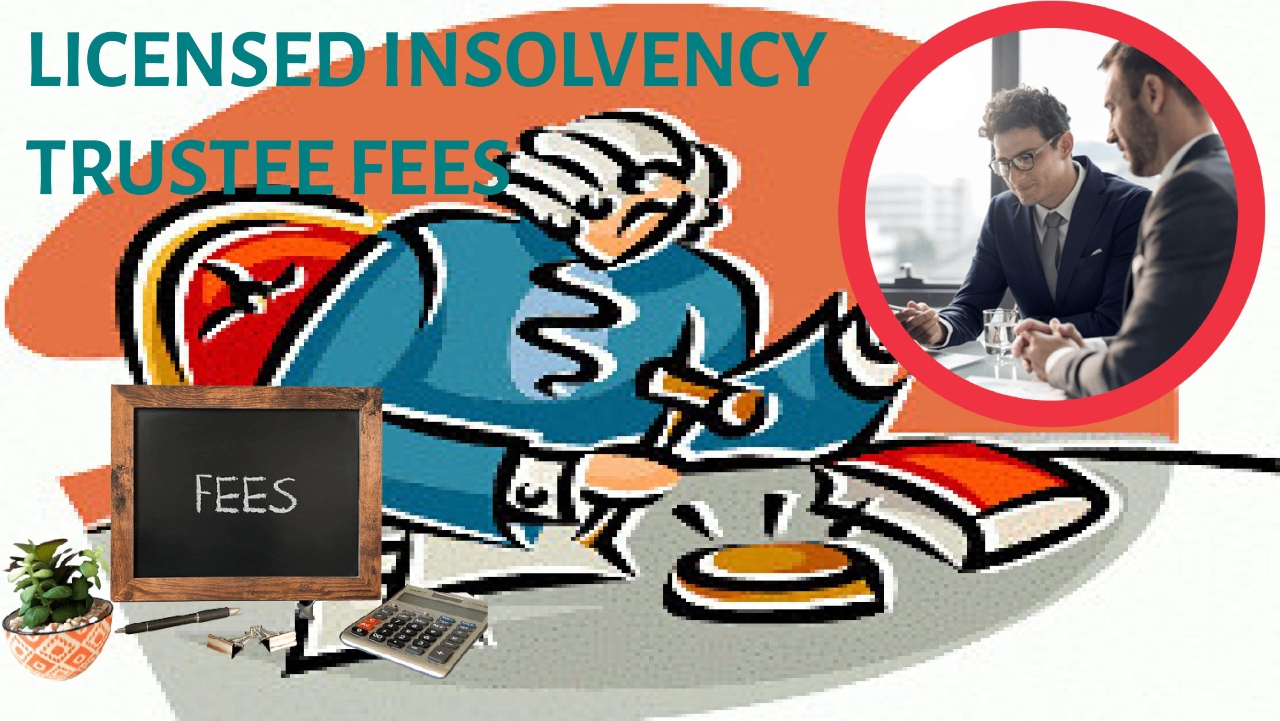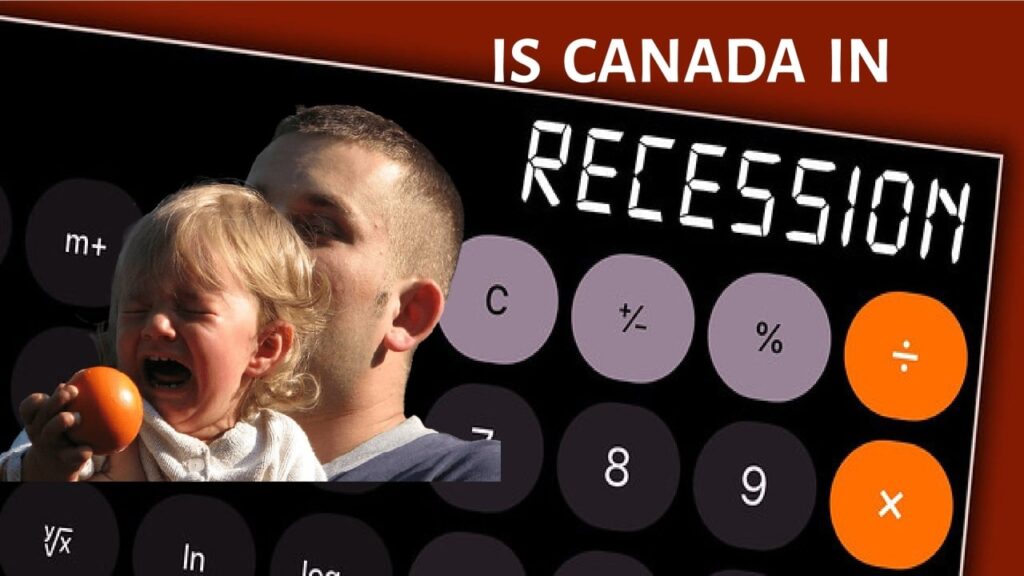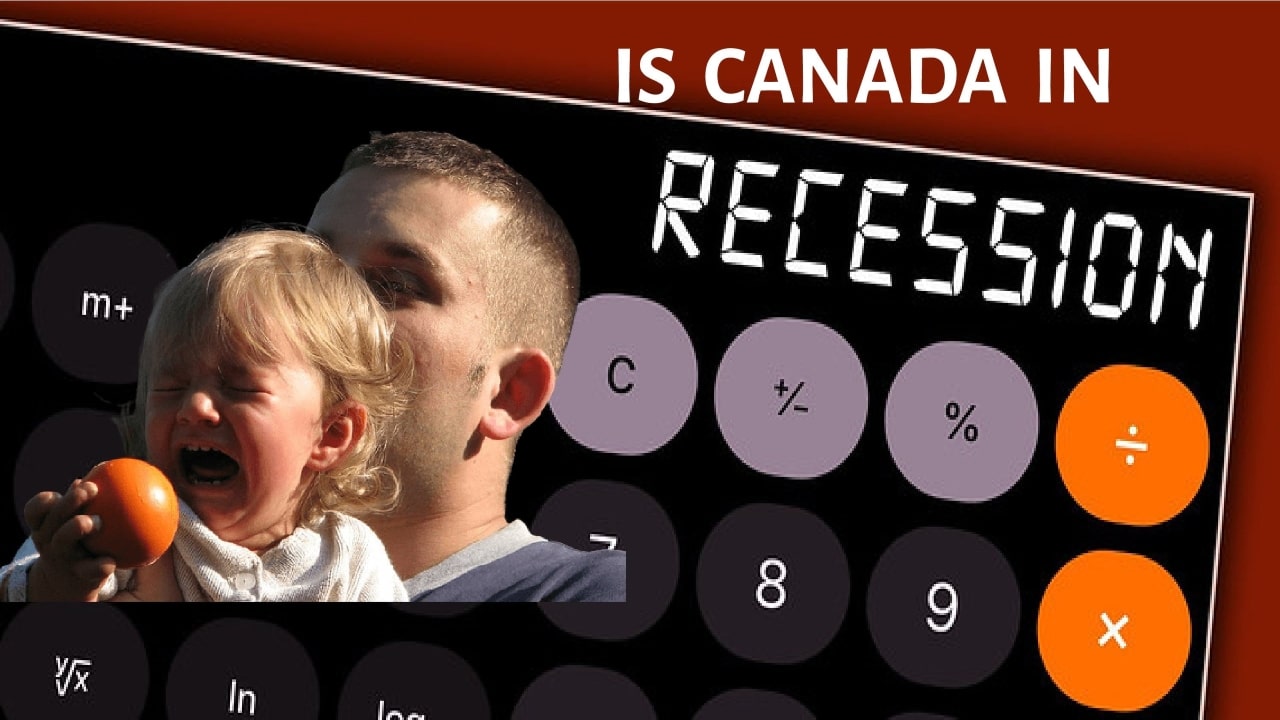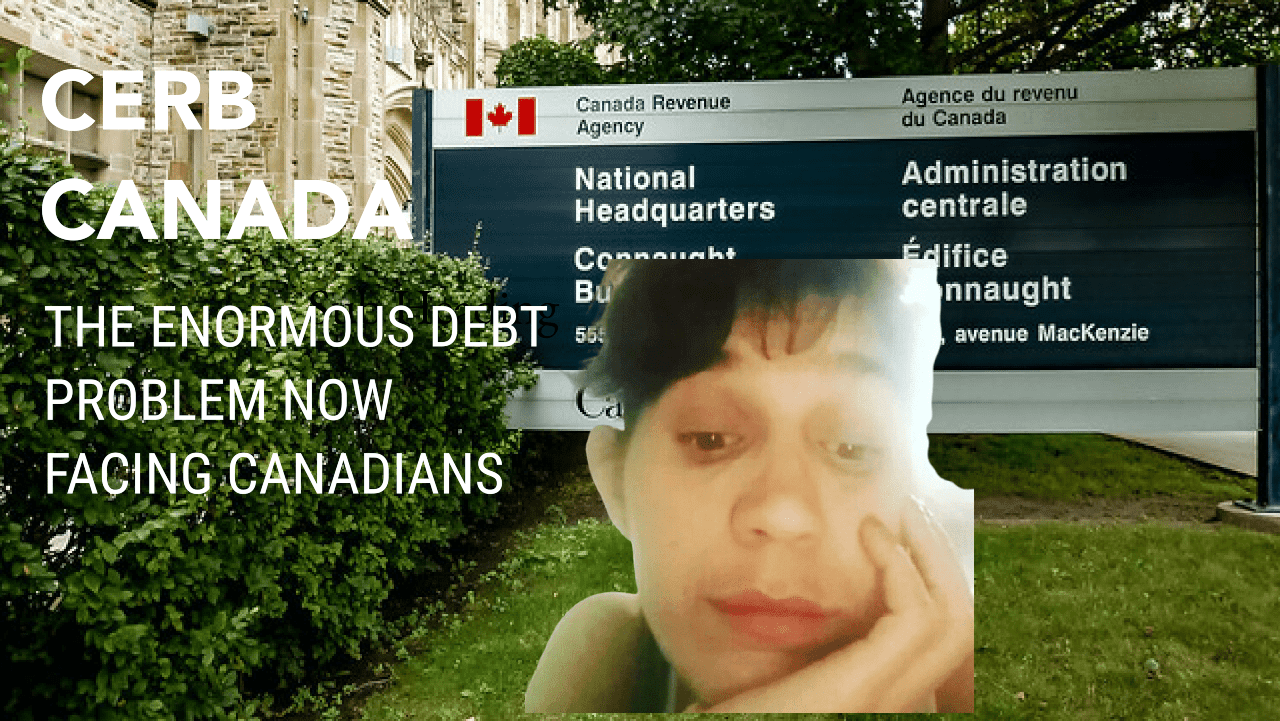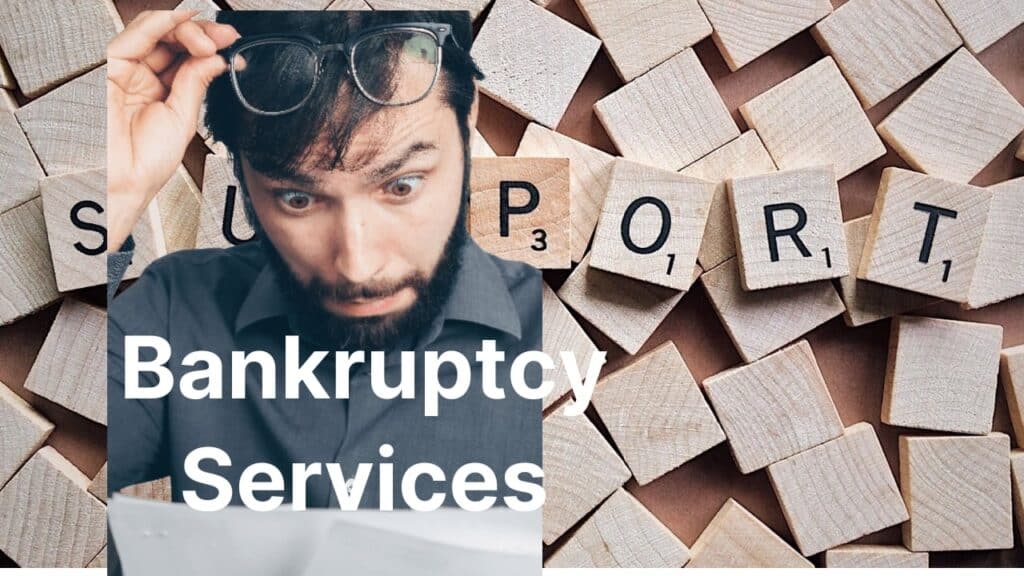Licensed insolvency trustee fees: How is a licensed insolvency trustee paid?
Are your debts or your company’s debts and financial situation causing you so much stress that you are considering speaking to a licensed insolvency trustee (formerly called a bankruptcy trustee or trustees in bankruptcy), but you are worried about the licensed insolvency trustee fees? Are you concerned about the professional fees to be paid because you think that businesses with debt problems already cannot afford to hire professionals? Your concerns are valid and relevant but you should not let that stop you from your initial inquiry. An insolvency trustee will always provide you with a no-cost initial consultation, discuss realistic options and explain the cost of each option to you.
Licensed insolvency trustee fees are set by bankruptcy laws and rules contained in the Bankruptcy and Insolvency Act (Canada) (BIA). They are reviewed by the Office of the Superintendent of Bankruptcy and must be approved by the bankruptcy court. Fees are either drawn from the funds accumulated in the insolvency file from the sale of assets in the receivership or bankruptcy administration or the monthly payment funding of the restructuring proposal. If there are insufficient assets in the insolvency file, then the insolvency trustee gets its fee from a third-party retainer.
In this Brandon’s Blog, I describe how licensed insolvency trustee fees are calculated. Then, I review a recent Ontario court decision to show what kind of evidence the Trustee needs to provide the court in order for its fees to be approved.
Licensed insolvency trustee fees: Disbursements included in a streamlined personal insolvency process
Licensed insolvency trustees offer a range of services for both individuals and businesses. For individuals, there are two streamlined insolvency processes:
- summary administration personal bankruptcy; and
- consumer proposals.
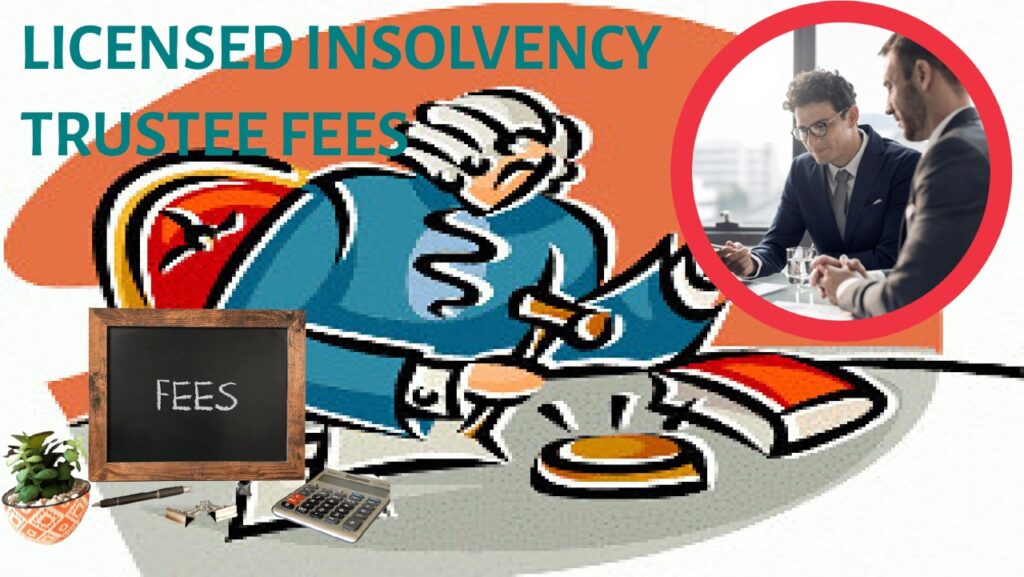
licensed insolvency trustee fees
Licensed insolvency trustee fees in a summary administration personal bankruptcy
The summary administration personal bankruptcy process applies when the assets of the bankrupt person to be sold are expected to sell for $15,000 or less. Licensed insolvency trustee fees for a summary administration personal bankruptcy are set by a formula called a tariff.
In a summary administration bankruptcy, the fees that insolvency trustees are entitled to are calculated as follows:
- 100 percent on the first $975 or less of receipts;
- 35 percent on the portion of the receipts exceeding $975 but not exceeding $2,000;
- 50% of receipts exceeding $2,000;
- for counselling fees of $75 per session, totalling $150; and
- an allowance for administrative disbursements of $100.
The reason the formula refers to receipts (of cash) rather than net proceeds from asset sales is that, in any personal bankruptcy, there are two types of cash receipts: 1. from the sale of assets; and 2. surplus income payments made by the bankrupt person, if any.
Licensed insolvency trustee fees: How much will it cost me to file a consumer proposal?
The calculation of the amount you need to offer your creditors in your consumer proposal has no relation to what the licensed insolvency trustee fees will be. Licensed insolvency trustee fees for a licensed trustee acting as the Administrator in the consumer proposal process is also governed by a tariff. It is calculated as follows:
- $750 on the filing of the proposal with the official receiver;
- $750 on the approval or deemed approval by the court;
- 20% of moneys distributed payable on distribution; and
- counselling fee of $75 for each counselling session for a total of $150.
In a consumer proposal, administrative disbursements are paid out of the above fee calculation.
In both summary administrations and consumer proposals where the licensed insolvency trustee fees are only the tariff, there is no need for court approval.

What factors influence licensed insolvency trustee fees in other administrations?
There are no streamlined provisions for any corporate insolvency administration. In addition to administering summary administration bankruptcies and consumer proposals, licensed insolvency trustees also can provide the following services:
- business review of a company to identify its solvency and future prospects so that financial advice can be given
- ordinary administration personal bankruptcy
- commercial bankruptcy
- personal Division I restructuring proposal to creditors (for consumers who cannot qualify for a consumer proposal)
- corporate Division I restructuring proposal
- private corporate receivership
- court-appointed corporate receivership
- winding-up corporate liquidation, either voluntary or court-supervised
- corporate restructuring under the Companies’ Creditors Arrangement Act
In all of the above government-regulated insolvency proceedings/insolvency procedures, there are only two factors that influence the licensed insolvency trustee fees. They are:
- Hours spent by the level of staff working.
- The professional hourly rate of the staff.
Licensed insolvency trustee fees: How does an insolvency practitioner receive compensation?
In all of the non-streamlined insolvency processes, I just described, how the licensed trustee gets the fees it is charging requires approval. In private appointments, the licensed trustee needs the approval of the client. In a court appointment or administration for bankruptcy services or any other mandate under the BIA, the licensed trustee needs court approval.
What evidence do licensed insolvency trustees need to provide to prove the time that was spent doing the work? The documentation expected of a licensed trustee is the same that is expected from an insolvency lawyer or any other kind of lawyer. What is expected are detailed time dockets, so that everyone can see who spent what time, on what day on what activity.
But what if proper dockets are not kept? Well, that is exactly what the court case I want to describe to you is all about.

Licensed insolvency trustee fees: How do practitioners of insolvency get compensated – it takes a Final Statement of Receipts and Disbursements
I am writing this Brandon’s Blog to be informative, not to embarrass anyone. So I will not be providing the case reference of the case I am now going to describe. This is actually the second such case in Ontario that I am aware of in the last 12 months.
The case deals with a bankruptcy trustee who submitted its final statement of receipts and disbursements (SRD) to the court for approval. Contained in this final statement is amongst other things, the line item for the fee and disbursements the Trustee is seeking court approval for. The court expects to see a sworn affidavit from someone on the insolvency trustee’s staff who has knowledge of the time spent and the fee charged outlining what was done and why it was necessary. The court also expects to see detailed time dockets.
In this case, and the very similar one that came before it, the insolvency trustee’s material did not include detailed time dockets. Both Trustees applied for taxation of their SRD in an individual debtor’s Division I Proposal. In both cases, the Office of the Superintendent of Bankruptcy issued clean letters of comment. The primary issue raised on this taxation is whether the insolvency trustee’s fees are to be approved. In the ordinary course, the debtor and the creditors have not been given notice of the taxation but it would appear that there is unlikely to be any objection.
The taxation raises the question of how the Trustee is supposed to establish its entitlement to fees when there is no time dockets kept or otherwise available to support the trustee’s claim. In this case (and the one before it), the Trustee is relying solely on the terms of the proposal. The proposal contains the methodology for calculating the fees to be taken by the Trustee in administering the proposal. The Trustee is relying on the fact that a Proposal is a contract between the debtor and its creditors, the court has already approved the Proposal and the Proposal includes the Trustee’s remuneration.
Licensed insolvency trustee fees: Bankruptcy trustees – why not keep accurate time records?
The Trustee requested fees (plus HST) based on the formula set out in the debtor’s proposal. While the Trustee provided an affidavit in support of its taxation, the Trustee did not provide any evidence of actual time spent at each staff level. The taxation came before the Associate Justice on September 1, 2021. She adjourned the taxation and requested time dockets.
The Trustee filed a report in response to the September 1, 2021 endorsement and request for time dockets, supporting the taxation and approval of the fees claimed, but no time dockets were included. In its report, the Trustee noted that it did not keep formal, detailed time records, as the terms of the Trustee’s fees and expenses are set forth in the Proposal as a “fixed fee” formula. This fee formula was accepted by creditors and approved by the Court. Therefore, the Trustee is relying upon that in not keeping time dockets.
The Trustee advised that its rationale for the development of a fixed fee formula to be charged by the Trustee, and for its decision to eliminate time docketing in such Division I proposals containing a formula for fixing a fee, were as follows:
- The fixed fee formula was designed by the Trustee to provide more certainty about the costs of administration for the Division I proposal. This formula also takes into account contingencies such as the time needed to negotiate the terms of the proposal and to verify the debtor’s financial information.
- The fixed fee formula was designed to make billing and accounting more efficient by eliminating the need to track chargeable time.
- The fixed fee formula was based on the consumer proposal tariff, to a certain extent.
- The fixed fee formula’s structure helped the Trustee keep initial costs low, so creditors could start getting dividends from the debtor’s monthly payments sooner.
- The fixed fee formula was designed to minimize unexpected increases in costs of administration and a resulting decrease in dividends.
- Not once has a creditor balked at the Trustee’s fixed fee.
- The court approved the proposal with the fixed fee formula, so the Trustee did not keep time dockets.
- There are many proposals whose administration is underway or completed that the Trustee has relied upon the fixed fee formula, and therefore has not maintained time dockets.
- The trustee’s fees, as claimed under the fixed fee formula, have not been objected to by the Office of the Superintendent of Bankruptcy Canada.

licensed insolvency trustee fees
Licensed insolvency trustee fees: The court’s analysis and decision
The BIA provides for the determination of a Trustee’s remuneration in section 39. The Associate Justice said that s. 39(5) of the BIA provides the jurisdiction to increase or reduce the remuneration claimed by a Trustee. Further, the court was not a “rubber stamp” obliged to approve the fees claimed by the Trustee merely because they were in the Proposal. The court noted that it is common for Trustees to request remuneration based on the time spent and hourly rates charged. The burden is on the Trustee to convince the court that the amount claimed for remuneration is warranted.
The Associate Justice listed the following principles that must be considered when it comes to taxation:
- Trustees should be given proper compensation for their services.
- Prevent unjustifiable payments for Trustee fees that harm the insolvent estate and its unsecured creditors.
- The efficient and conscientious administration of an estate for the benefit of creditors and, to the extent that the public is concerned, in the interests of the proper carrying-out of the objectives of the BIA, should be encouraged.
This Associate Justice also dealt with the previous case I mentioned above, which involved the taxation of a statement of receipts and disbursements in a Division I proposal where no time dockets were kept. In that case, she held that the lack of time dockets was not fatal to the approval of fees. She said the court is in a difficult position when there is no corroborative evidence as to the time and effort spent in the administration of the proposal.
So due to the lack of evidence justifying the time spent by the various staff members of the Trustee firm at their normal hourly rates, the Associate Justice was forced to look at the entirety of the Trustee’s administration. She found issues with it and therefore concluded that the Trustee was not entitled to the full fee being requested, based on the formula contained in the Division I Proposal. The Associate Justice determined, with the benefit of hindsight as to how the Division I Proposal turned out, that the debtor could have filed a consumer proposal and the creditors would have then been better off with a higher dividend distribution.
The Associate Justice ruled that, in this case, fees and disbursements will be set on a consumer proposal tariff basis. The proposal fund totalled $31,500. Using the formula for a consumer proposal, the Trustee was therefore entitled to fee and disbursements of $7,620 (plus HST) and not the $9,973.46 fee and $14,252.01 of disbursements (plus HST) formula amount.
The Associate Justice was also very critical of the Trustee’s administration and she had strong words overall for Trustees coming to court without proper evidence of the time spent when requesting approval for fees and disbursements at taxation. Her warning was that she did not accept the Trustee’s submissions that:
- The court’s jurisdiction over approving the SRD and the fees to be claimed by the Trustee is replaced by the approval of the creditors and the OSB. Creditor and OSB approval are not determinative when it comes to taxation, but their approval is still relevant.
- The appropriateness of the Trustee’s fees is not considered in an application for court approval of a Division I proposal. The court is not prevented from taxing the Trustee’s fee and disbursements upon the taxation of the SRD.
- Any benefits to having a set fee remove the court’s jurisdiction to approve the Trustee’s fees. If the Trustee decides to save time by not documenting their hours worked, they do so at their own risk. The responsibility is always on the Trustee to justify their fees.
- Creditors who want to know how much the Trustee’s fee will be cannot override the Trustee’s responsibility to explain to the court why the fee is fair and reasonable.
The court directed the Trustee to redo its SRD on the basis decided by the court, resubmit it to the Office of the Superintendent of Bankruptcy for its comment letter and then resubmit the entire package to the court for the taxation order.
A tough day in court to be sure.
Licensed insolvency trustee fees: Call us for debt-free solutions
I hope you found this licensed insolvency trustee fees Brandon’s Blog interesting. Among the many problems that can arise from having too much debt, you may also find yourself in a situation where bankruptcy seems like a realistic option.
If you or your business are dealing with substantial debt challenges and are concerned that bankruptcy may be your only option, call me. I can provide you with debt relief advice in setting up one of various possible debt management plans using debt relief options for you or your company.
You are not to blame for your current situation. You have only been taught the old ways of dealing with financial issues, which are no longer effective. We are debt professionals who know how to use the new innovative tools to solving debt problems while avoiding a bankruptcy filing.
We’re passionate about permanently solving your financial problems with you and getting you or your company out of debt. We offer innovative services and alternatives, and we’ll work with you to develop a personalized preparation for becoming debt-free which does not include bankruptcy. We are committed to helping everyone obtain the relief they need and are worthy of.
You are under a lot of pressure. We understand how uncomfortable you are. We will assess your entire situation and develop a new, custom approach that is tailored to you and your specific financial and emotional problems. We will take the burden off of your shoulders and clear away the dark cloud hanging over you. We will design a debt settlement strategy for you. We know that we can help you now.
We realize that people and businesses in financial difficulty need a workable solution. The Ira Smith Team knows that not everyone has to file for bankruptcy in Canada. Most of our clients never do, as we are familiar with alternatives to bankruptcy. We assist many people in finding the relief they need.
Call or email us. We can tailor a new debt restructuring procedure specifically for you, based on your unique economic situation and needs. If any of this sounds familiar to you and you’re serious about finding a solution and improving your financial future, let us know. Starting Over, Starting Now.
Call us now for a no-cost consultation to find out what your debt relief options are.
